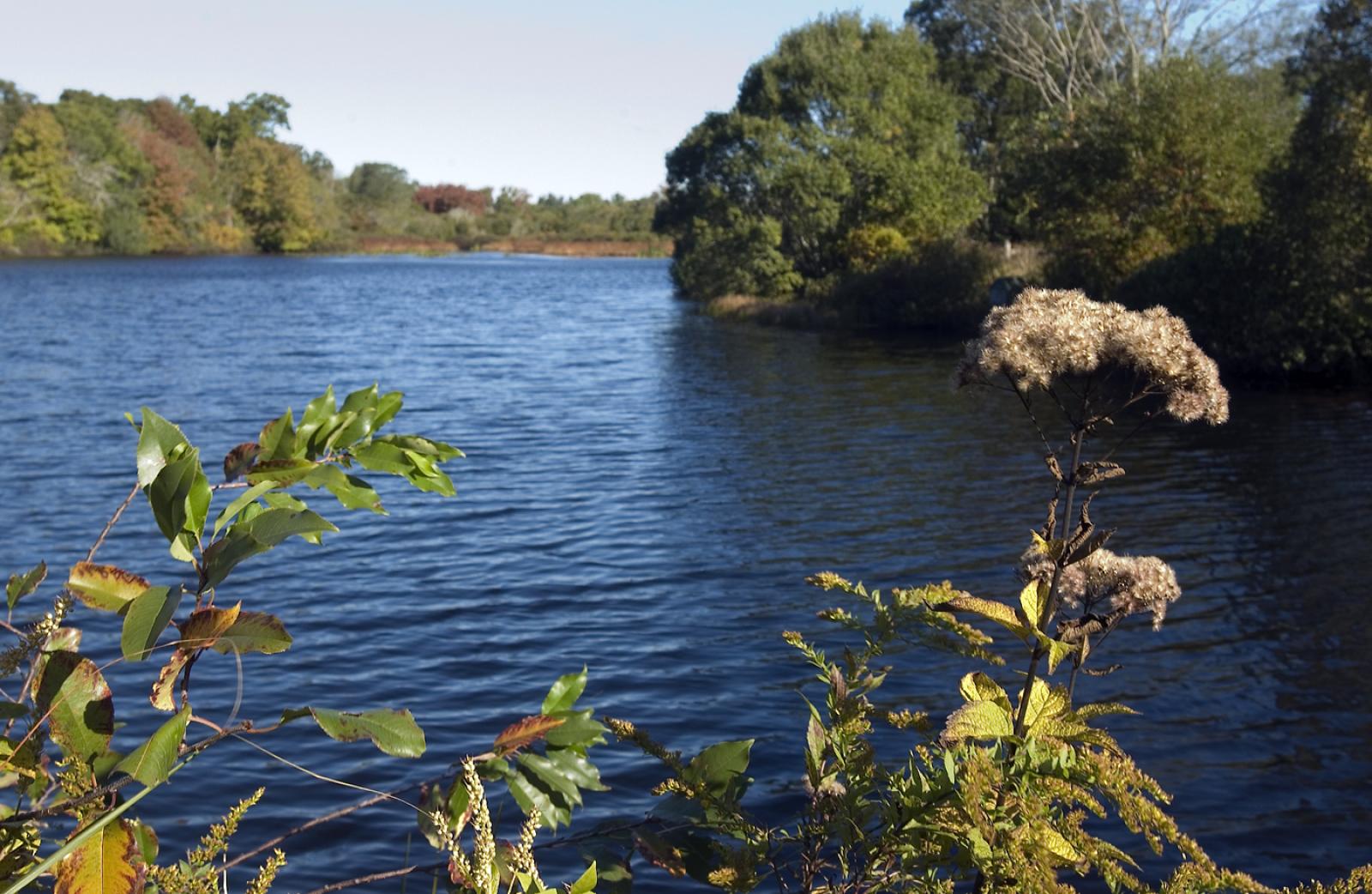West Tisbury selectmen on Wednesday authorized an application to the town community preservation committee for $25,000 to perform several tests of the Mill Pond, the historic manmade pond that graces the entrance to town on the Edgartown-West Tisbury Road.
Although the vote was unanimous, it was not without dissent.
The application came from the specially appointed Mill Pond research committee created three years ago to come up with a plan to improve water quality in the pond, and the committee has split over the best way to restore the pond.
Two members, Bob Woodruff and Craig Saunders, believe dredging is necessary to prevent the pond from drying up and turning into a marsh. But a third member, Kent Healy, is opposed to dredging and believes the pond can be preserved with simpler and less costly measures.
Because the committee was appointed it needed permission from selectmen to apply for the CPA funding.
Selectman Jeffrey (Skipper) Manter said he was categorically opposed to dredging the pond — estimated to cost between $150,000 and $200,000 — and stressed he was only voting to authorize the application to gather more data.
“I am uncomfortable with the notion this may lead to spending $250,000 to dredge the Mill Pond . . . but it would be nice to know this information regardless of whether we dredge the pond. I am just not in favor of spending the big bucks,” he said.
While presenting the CPA application, the Mill Pond committee also submitted its final report to selectmen, which not surprisingly contained two conclusions. The first was from Mr. Healy, who recommended the town continue to clear brush and pull weeds in the pond and also continue to monitor the rate of sediment deposition along the bottom of the pond.
The second conclusion from Mr. Woodruff and Mr. Saunders proposed a three-phase dredging project that includes engineering, permitting and construction. “We recommend that the board of selectmen apply now for CPA funds for phase one to be acted on at the regular 2010 [annual] West Tisbury town meeting,” their report concludes.
Mr. Woodruff on Wednesday made it clear he viewed the sediment analysis as the first step in moving forward with dredging the pond. “We plan to prepare detailed engineering plans and specification for submission to the permitting agencies. This should include the area to be dredged, and the area for dewatering, both mechanical and hydraulic dredging,” he said.
But Mr. Healy said the town did not need to spend money to perform tests on the pond. He said he could record the sediment deposits by simply putting something like a cookie sheet on the bottom of the pond and monitor it over a period of time.
“It’s a relatively simple process. You can gather information over a year without spending any money . . . I don’t see the need to even think about dredging until there is some definitive indication it is needed,” he said.
Several residents in attendance offered opinions.
Barbara Day said she supported dredging the pond, noting that town voters in 1982 passed a bylaw to preserve 14 properties of historical significance, one of them being the Mill Pond. Longtime town resident Phyllis Meras cited the vegetation sprouting through the pond surface as evidence that water levels have decreased in recent years.
“I lived on the pond in the 1960s for six years, and there is no question in my mind it was much deeper. We used to go down to the pond all the time and there were no grasses growing out of the middle. Certainly by sight I think everyone would agree things have changed,” Ms. Meras said.
In the end selectmen agreed to authorize the CPA application without committing to the dredge project.
Mr. Manter ended the discussion with a final thought.
“I’m not in favor of dredging. I want to make that clear. But this part is okay. I’ll take this one bit at a time,” he said.




Comments
Comment policy »